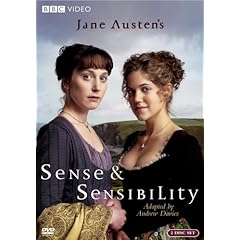Review: The Golden Compass (DVD, widescreen, single disc)
Posted in Review on May 18th, 2008 Netflix came through again. I’m trying to see all the Hugo nominees before I vote and today we got The Golden Compass. The disc we got was the widescreen, single disc, with no special features. You can check out the YouTube trailer for the film and related videos if you haven’t seen the film already.
Netflix came through again. I’m trying to see all the Hugo nominees before I vote and today we got The Golden Compass. The disc we got was the widescreen, single disc, with no special features. You can check out the YouTube trailer for the film and related videos if you haven’t seen the film already.
Based on the novels by Philip Pullman, The Golden Compass is the first book of His Dark Materials trilogy. I read The Golden Compass several years ago and have forgotten a lot of the minor details but pretty much remember the major threads of the story. I also remember the big bru-ha-ha when the film was being made about the changes that were made in order to soft-pedal the anti-religiousness of the film. Personally, I thought at the time that that was a bit much since the book wasn’t against religion exactly but against blindly following anything without questioning the authority, integrity, or morality of that which is being followed.
The movie has been changed from the book, which is to be expected, all books go through tremendous changes before they become films, it’s just the nature of changing from one media to another. The film was also a lot lighter than I would have thought based on the material in the book. Some may find it was too dark, after all they are kidnapping children and experimenting on them. What is barely touched on is what that experimentation does to the child, why it is being done, and the ramifications for the others in that universe/world. Some of the explanation can be garnered from the film but mostly it is barely mentioned or visually represented unless you’ve read the books and have prior knowledge to understand what’s happening. Then the film ends prior to the end of the book. Granted the book ended on a very dark note for Lyra but why not end at the ending if you intend to do a follow up with book two (The Subtle Knife)?
What they didn’t change is Lyra. She’s still a wonderful character: strong, witty, intelligent, headstrong, quick thinking, brave, and just about every quality that makes a hero. She’s also young and knows when to ask for help and a keen judge of character in most situations. The other characters are more supporting roles, Lyra is the center of all the action. She’s on a quest to set things right and the others fall in with her on her adventure. But, like most adventures, she’s lacking a lot of the information that she needs to make her decisions and so she goes with her heart and what she feels is right.
The animation of the Ice Bears is wonderful. They really look like armored talking polar bears. The daemons are varied and delightful, though not fully explained. The fight scenes are fast, furious, and not pleasant; but then no fights are pleasant and they shouldn’t be here either. The world is wonderfully realized for the film with a lot of detail and small touches that make you let go and believe.
So, while it wasn’t as strong on story as I would have liked; it made up for it in special effects and some nice scenes. Dakota Blue Richards as Lyra was excellent from start to finish, doing a marvelous job of making the audience believe in her character. All in all, well worth seeing — even if you haven’t read the book. Perhaps even better if you haven’t read the books because then you don’t have prior knowledge that would cause you to be disappointed.
 Some people just love this program. Many have told me that it’s on the edge and as funny as can be — my humor center must be damaged. I’ve just watched the entire first season and well, it’s okay but I’m glad I didn’t pay for these disks (renting is a good thing).
Some people just love this program. Many have told me that it’s on the edge and as funny as can be — my humor center must be damaged. I’ve just watched the entire first season and well, it’s okay but I’m glad I didn’t pay for these disks (renting is a good thing). Just got back from seeing
Just got back from seeing  Finally got a copy of
Finally got a copy of 

 Tonight we dug out
Tonight we dug out  Sunday, March 23rd, PBS’s Masterpiece Theater aired
Sunday, March 23rd, PBS’s Masterpiece Theater aired  No matter which version of Emma you enjoy, all are based on the novel
No matter which version of Emma you enjoy, all are based on the novel